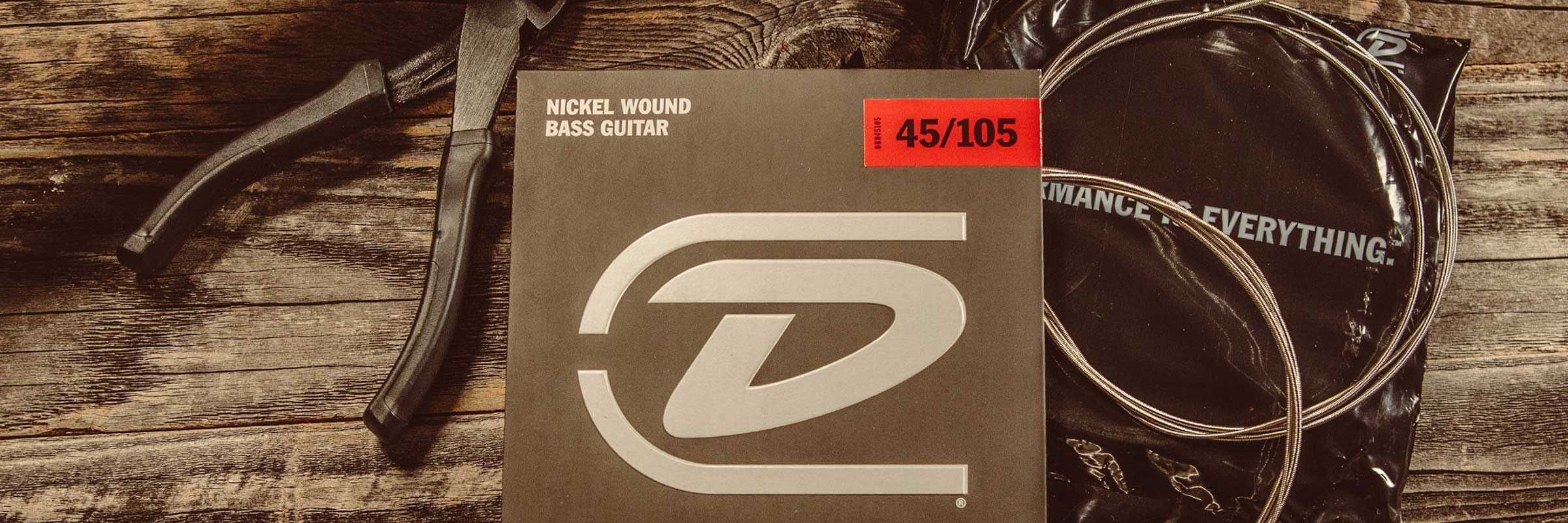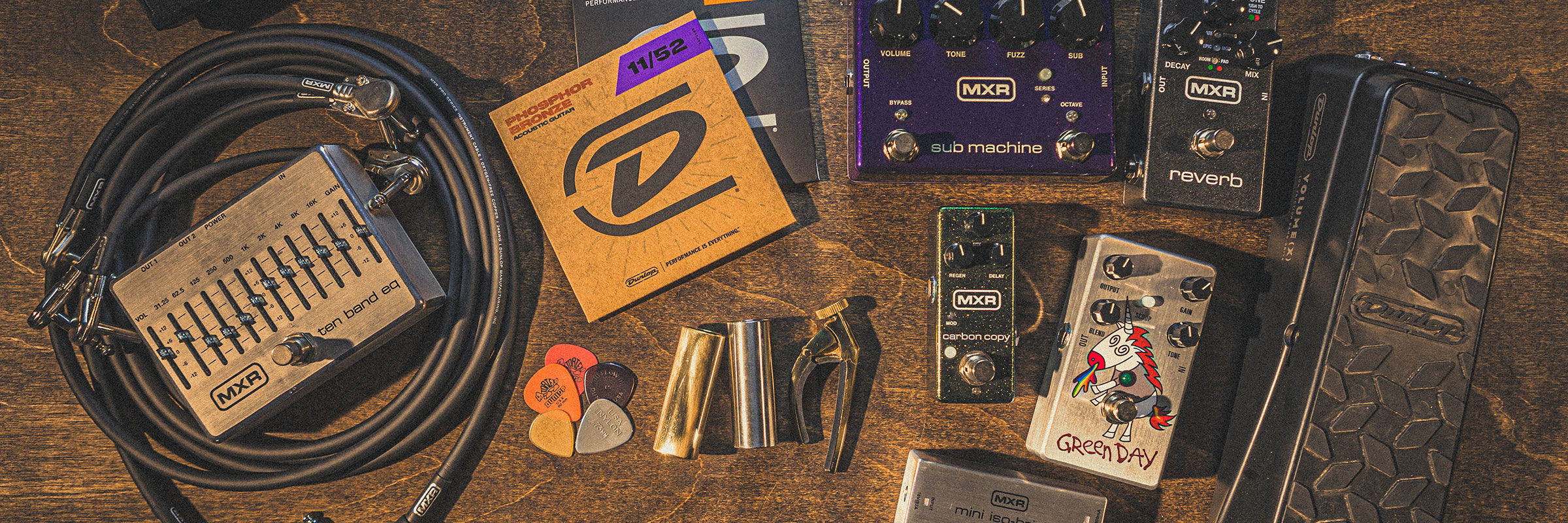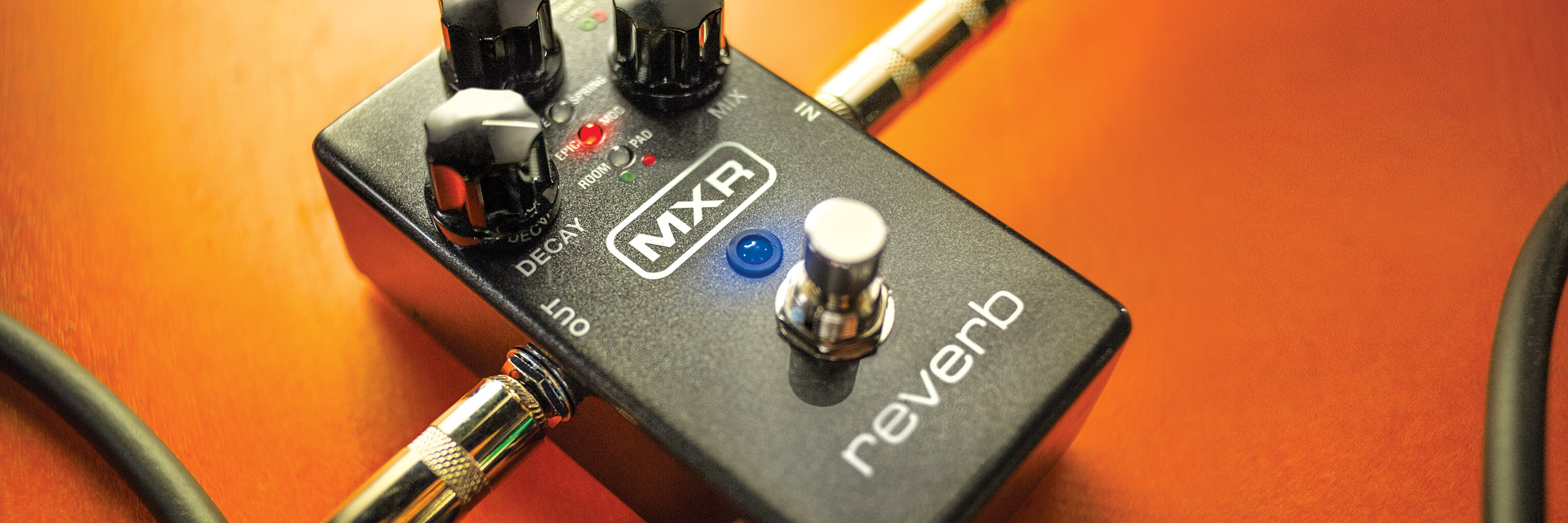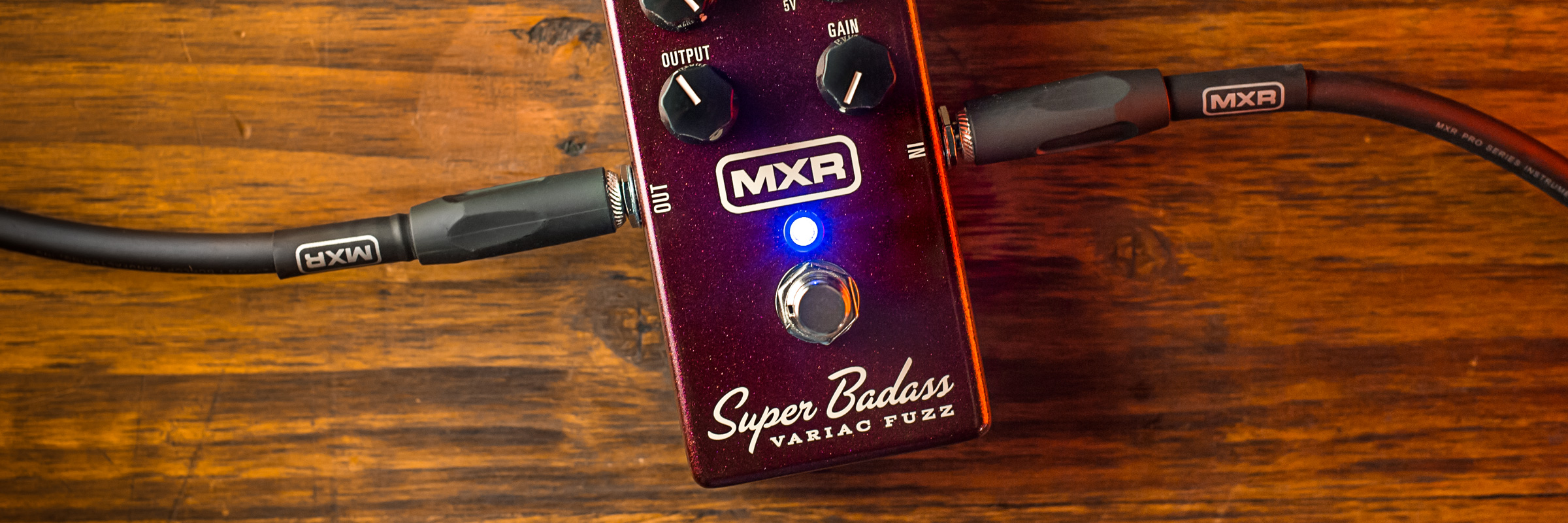The MXR® Super Badass® Variac Fuzz delivers a big, aggressive, and biting square wave tones with a nice touch of smooth compression. Its Tone, Output, and Gain controls provide plenty of fine-tuning potential, but what makes this pedal a dream come true for tonechasers is its Variac control.
The Variac control allows you to vary the pedal’s voltage from 5 to 15 volts, which also changes how much headroom is available—lower voltage means lower headroom and vice versa. Many pedals sound radically different depending on how much headroom they have.
Setting the Variac control around 12 o’clock gives you what is essentially Super Badass Variac Fuzz’s default 9-volt sound. It’s great with the Gain and Output controls turned up and pushing hard into a somewhat driven tube amp for a very stoner rock or shoegaze vibe, depending on what other effects you’re running.
Players chasing vintage tones will want to turn the Variac control counterclockwise to drop the voltage below 9V for the sound you get from a battery that’s running out of juice. The resulting decrease in headroom will produce a spitty low-fi fuzz reminiscent of psychedelic rock. The only way to get this sound back in the day was to manage a collection of half-dead batteries, but now you can do it with the twist of a knob.
Turning the voltage up past 9V gives you a totally different sound. Going clockwise form 12 o’clock, the Variac control opens up the Super Badass Variac Fuzz to something more like an organic overdrive with fuzzy edges.
That’s just the start of what you can do with the Super Badass Variac Fuzz. Use the Output, Tone, and Gain controls to feel out the range of tones provided by the Variac control. Use your guitar’s volume knob to play with the intensity of the fuzz. Try it with different amps and pickup types. Experiment with other effects—this thing sounds killer with a Cry Baby® Wah, for example.
Bottom line, the Super Badass Variac Fuzz is an incredibly versatile pedal with a range of textures and timbres that can be dialed in quickly and easily. Now put one on your pedal board and start chasin’ them tones.









